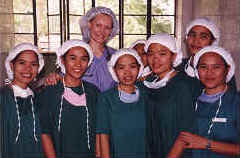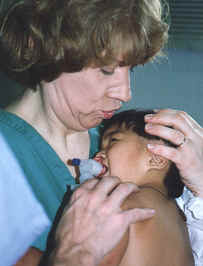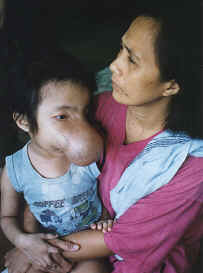
The irony of the plight of children afflicted with cleft lip or cleft palate is that their condition is permanently, and near completely, correctable. They need not suffer if they can receive needed surgical services.




Operating Room Hospital Ning,
Angeles city, Philippines
Thena Holeman, RN
and Philippine colleagues
Based on the facilities available and the local need, an interdisciplinary team of as many as 30 members is assembled to work in conjunction with local health care professionals over a two week period. Volunteers pay their own expenses, with the exception of the nurses' airfares, which are subsidized by the organization.

In an average year, with the generous help of its sponsors and volunteer health care professionals, the Operation Sunrise team typically provides over a quarter of a million dollars of surgical services to over one hundred children.


Girl with encephalocele (incomplete
formation of the central face)
Operation Sunrise volunteers and donors are participants in an incredible form of humanitarian diplomacy. Upon departing the host country the lives of children afflicted with cleft lip and palate and their families are incalculably changed and the local medical community is one step closer to medical self-sufficiency.

Young boy a few days after repair
of his cleft lip